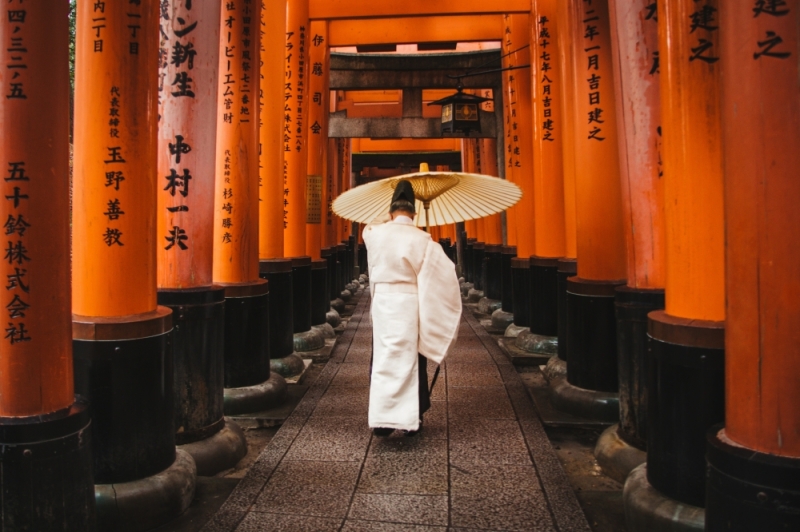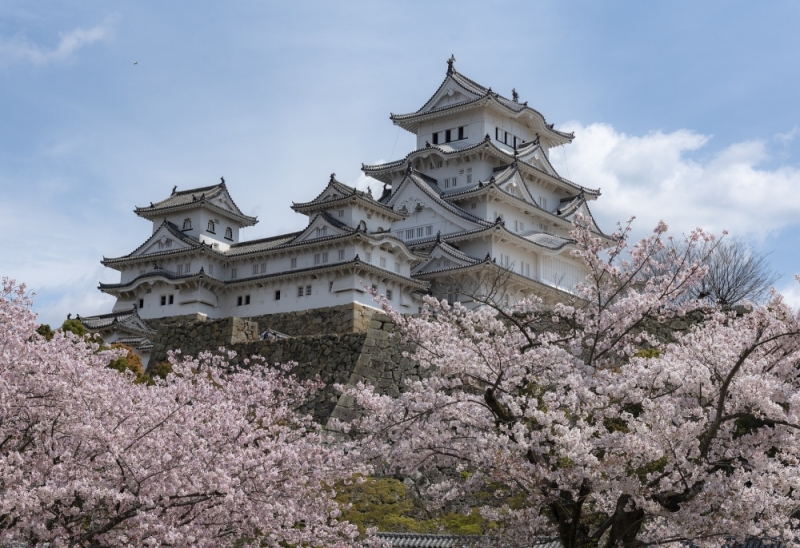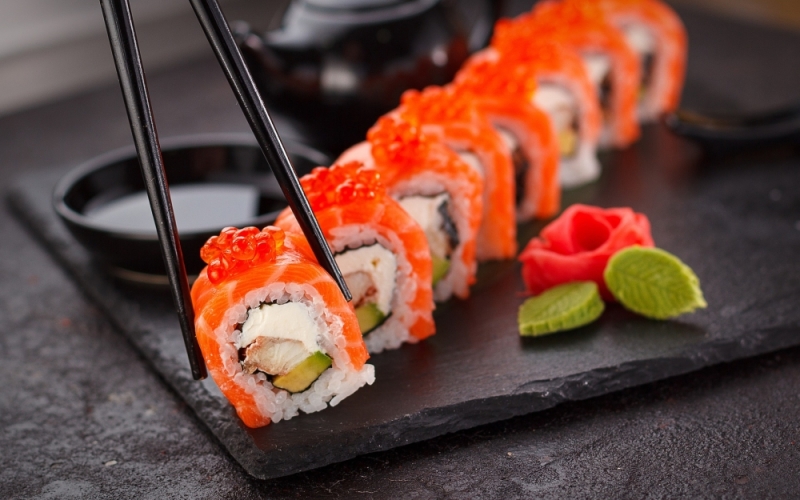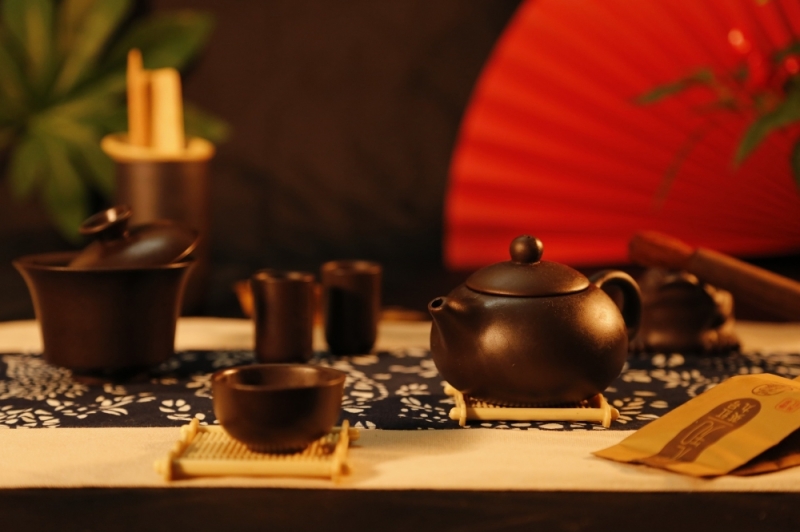The First Two Days: Exploring Tokyo
One of the trips I always wanted to take was to Japan, so when, after about 13 hours of flight, I finally arrived in Tokyo, together with my husband, it didn't seem real. It took me a while to realize that I was finally realizing my dream of being there, in one of the most fascinating countries in the world. I had high expectations for this trip, which were more than paid off. This is my travel diary:
Day 1 - with a taxi from the airport to our accommodation in central Tokyo. The city is crazy: the people are so full of life and the colored lights are everywhere. There are so many things to do here that it's hard to decide where to start! We started with the famous Ueno Park, where we admired its great variety of animals, plants and flowers. We then visited Sensoji Temple, the oldest Buddhist temple in the city. We got lost in the alleys of Asakusa, where we discovered a vast array of shops and markets, trying not to be overwhelmed by the grandeur and extreme care that Tokyo puts into its details. Then in the evening we wandered around exploring the streets of the centre, where we found some very nice shops where we could go shopping and many Japanese-style cafes, among the lights of a city that never seems to go to sleep.
Day 2 - Tokyo again to discover the Imperial Palace, the Meiji Shrine and the Ueno Museum. We were amazed by the architecture, design and history we saw in these places. Japan is very tied to its past and its traditions but, as we well know, it is also one of the most developed countries, especially from a technological point of view. Suffice it to say that the Kansai region (Osaka, Kyoto, Kobe) has its airport built on an artificial island, connected to the mainland via a bridge on which cars and Shinkansen trains circulate. Clearly, excellent sushi eaten at Tsukiji, the Tokyo fish market, where the tuna arrives every day and is then auctioned off could not be missing. Another thing that cannot be missed in Tokyo is a visit to Shibuya Crossing: The famous Shibuya intersection, a magical place to contemplate the crowd which, like thousands of organs of a single perfect mechanism, move through the intersection in a synchronous manner and orderly, realizing the true energy that moves the city of Tokyo.
Day 2 - Tokyo again to discover the Imperial Palace, the Meiji Shrine and the Ueno Museum. We were amazed by the architecture, design and history we saw in these places. Japan is very tied to its past and its traditions but, as we well know, it is also one of the most developed countries, especially from a technological point of view. Suffice it to say that the Kansai region (Osaka, Kyoto, Kobe) has its airport built on an artificial island, connected to the mainland via a bridge on which cars and Shinkansen trains circulate. Clearly, excellent sushi eaten at Tsukiji, the Tokyo fish market, where the tuna arrives every day and is then auctioned off could not be missing. Another thing that cannot be missed in Tokyo is a visit to Shibuya Crossing: The famous Shibuya intersection, a magical place to contemplate the crowd which, like thousands of organs of a single perfect mechanism, move through the intersection in a synchronous manner and orderly, realizing the true energy that moves the city of Tokyo.
From Day 3 to Day 8: The Journey through the History and Nature of Japan
Day 3 - we left Tokyo towards Kyoto using the train, and in particular the so-called "bullet trains" (i.e. high-speed trains), which travel on the Shinkansen lines at an average of 320 km per hour and are famous for being among the most punctual in the world. Kyoto, compared to Tokyo, is certainly a much more traditional and quiet city. Here we strolled among its famous temples, shrines and gardens. We felt like we were in a dream as we walked through the ancient streets. We visited Kiyomizu-dera Temple and Fushimi Inari Shrine, and also took a cruise on Lake Biwa to admire nature. The night in Kyoto was unforgettable when, walking through the streets of the Gion district, we met a geisha, very difficult to see nowadays.
Day 4 - New move towards Itsukushima sanctuary which is located on the island of Miyajima, in the city of Hatsukaichi (Hiroshima prefecture). The site is included in the list of UNESCO World Heritage Sites, as well as a national treasure of Japan, and is included in the Setonaikai National Park. this shrine is one of the most famous and iconic in Japan. Its wooden platform reflects on the water, creating a unique and magical atmosphere.
Day 5 - Not far from the city of Hatsukaichi city is Hiroshima. We went here to visit the Museum and the Tower of Peace. It was a very emotional and moving moment, and it made us remember how important peace is and how important it is to maintain harmony between people. We also visited the Sogo Garden, a historic building and traditional pagoda.
Day 6 - Today we hopped on a train towards Hakone National Park: Located in Kanagawa Prefecture, this national park offers a beautiful view of Mount Fuji. It is full of hot springs, waterfalls, ice falls and many other places to visit. Then in the city of Kanazawa we visited the Kenroku-en Garden: It is one of the most beautiful historical gardens in Japan, an enchanting place full of flowering trees and herbs.
Day 7 - New train towards Himeji Castle (in Hyōgo Prefecture), also known as the White Castle of Himeji (due to its bright white exterior), dating back to the 15th century. It is one of the most beautiful castles in Japan and is famous for its shapes, areas and gardens. It was originally a military building and is one of the oldest structures from the Sengoku period that have come down to us. Since 1993 it has been included in the list of UNESCO World Heritage Sites. Together with the castles of Kumamoto and Matsumoto it is part of the so-called Three Japanese Castles, of which it is the largest and most visited by tourists.
Day 8 - Departure Today is our last day in Japan. We got up early to see the last few things we had missed before catching our flight. We visited one of Tokyo's famous shopping areas and did some last shopping.
Japanese Cuisine: A Journey of Flavors
Fans of Japanese cuisine, on this trip of ours, there was a whole world of delights to explore. Japan has a rich variety of traditional dishes, some of which have never been tried by anyone else. But eating in Japan is also an emotional experience. Let's start with one of Japan's most iconic dishes: sushi. These are pieces of raw fish or seafood served with rice and condiments. Its preparation requires great skill, and it is one of the dishes that best represents the culinary excellence of Japan. Sushi preparation is an art, and when you taste it, you will feel as if you are taking a journey into the heart of Japanese culture. Another traditional dish of Japan is ramen. This noodle dish is one of the most popular and flavorful dishes in Japan. It is a mixture of ingredients such as meat, fish, vegetables and eggs and can be served in a variety of forms. Ramen can be a perfect way to enjoy the authentic flavor of Japan. Another specialty of Japan is tempura. It is a light fried vegetable and fish dish that is served with soy sauce. This dish is a delight for everyone's palates, and is a fun way to enjoy the flavors of Japanese cuisine. Finally, we can't forget matcha tea. This drink is a mixture of green tea and tea powder, which is served with milk or sugar. Matcha tea is a great way to relax after a long day of traveling in Japan.
The Tea Ceremony: An Immersion in Japanese Tradition
And speaking of tea, we had the privilege of participating in a tea ceremony according to the ancient Japanese tradition. The tea ceremony is a Japanese tradition dating back more than 500 years, said to have been introduced to Japan way back in the 13th century by a Buddhist monk named Eisai. Tea, known in Japanese as "cha", is a drink deeply rooted in Japanese culture. The tea ceremony is an important part of this culture, a time of peace and tranquility, where people come together to share tea and discuss topics of common interest, and where tea is prepared and served with great respect and meaning. The ceremony is a spiritual experience, a celebration of hospitality, respect and worship towards others, which allows us to reconnect with ourselves and with nature. During the tea ceremony, participants sit around a low table, with a small cup and teapot. An elderly tea master, known as "O-cha no sensei", brings a cup of green tea, brewed with a blend of high-quality green tea leaves. He pours the tea into the teapot, mixes the tea with hot water, pours it into the cup and serves it. It was a magical moment that allowed us to learn more about Japanese culture. We learned how to respect the simplicity and harmony that Japan teaches, taking our time to appreciate the simple things in life.
These eight days in Japan were unforgettable. We saw historical and cultural places of great importance, admired the beauty of nature and tasted some of the most exquisite dishes. We returned home full of memories and with the awareness of how important it is to appreciate the things we have.









